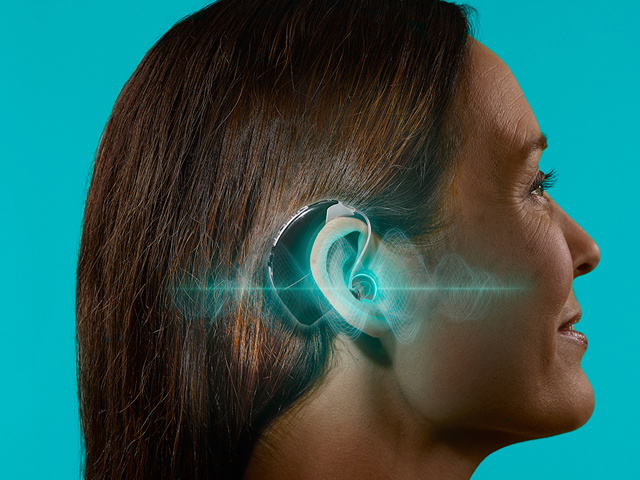


With the advancement in technology, Starkey's Hearing Technologies have unwrapped an AI-powered hearing aid that fits into your ear, automatically translates foreign languages, and tracks both your physical and mental health.
With this device, Starkey aims to overcome the disgrace of hearing aids as medical devices for old folks . It basically promotes Artificial Intelligence hearing aid as a multifunctional device that combines features from wireless headsets, fitness trackers and health apps, and language translation programs.
“What we want to do is make hearing aids cool,” says Brandon Sawalich, president of Starkey. “It’s not about hearing loss, it’s about hearing gain.”
The Livio AI hearing aid still fulfills its core function. It uses a combination of directional microphones and machine learning algorithms to classify the wearer’s listening environment: chatting outside in a backyard surrounded by natural sounds, having a conversation in a loud restaurant, or listening to music at a concert. The hearing aid then adjusts to the best listening mode for the wearer’s acoustic conditions.
A near-field magnetic induction system provides a wireless link between the hearing aids worn in each ear, which enables the system to seamlessly balance user adjustments to volume or listening environment mode. The ear-to-ear link also enables binaural audio signal processing, which can enhance the wearer’s ability to hear speech in a noisy environment. For example, the hearing aid system may choose to amplify the voice of the person standing directly in front of the wearer.
Together, hardware and software help deliver the “best-sounding hearing aid we have released,” Bhowmik explains. Still, he seemed especially excited by the smart wearable functions built on top of that core hearing aid.
The Livio AI hearing aid has a fitness tracker with inertial sensors that can count steps and track daily physical activity. But it also comes up with daily wellness scores for both physical and mental health and reports the scores on an associated smartphone app. The mental health “brain score” is based on hearing aid usage time, the degree of social engagement derived from the acoustic environment, and the extent of active listening.
The hearing aid can also translate between 27 languages. The language translation works in conjunction with a smartphone app. If an English speaker wearing the device says something to a Chinese speaker, the Livio AI system would translate the words and display them in Chinese characters on the English speaker’s smartphone screen. Starkey included the language translation function in part because many potential customers seemed eager to have that capability. Starkey worked with several notable AI companies to integrate language translation.
The new hearing aid also functions as a generally hands-free way to respond to phone calls or even stream the audio from a Netflix show playing on a smart TV into the wearer’s ears. Toward that end, the hearing aid has a dual-band 2.4 gigahertz radio for wireless communication with smartphones, TVs, and other devices.
Starkey hearing aid has automatic adjust for different sound environments which could be a big help for wearers, says DeLiang Wang, a professor of computer science and engineering at Ohio State University, who has worked with Starkey in the past but was not involved with the Livio AI development. He says typical hearing devices usually lack such automatic “environment classification” and typically require wearers to manually adjust settings.
Starkey president Sawalich acknowledged that the Livio AI hearing aid would not be for everybody. The ideal customer might be someone who is reasonably tech-savvy and comfortable with using smartphone apps, and perhaps has a relatively active lifestyle.
Just like your IoT kit, this device is also connected via internet to the phone and can be accessed via app, you can also learn and build such technologies. Check out more about IoT kit here.
Source-IEEE SPECTRUMEEE Spectrum
